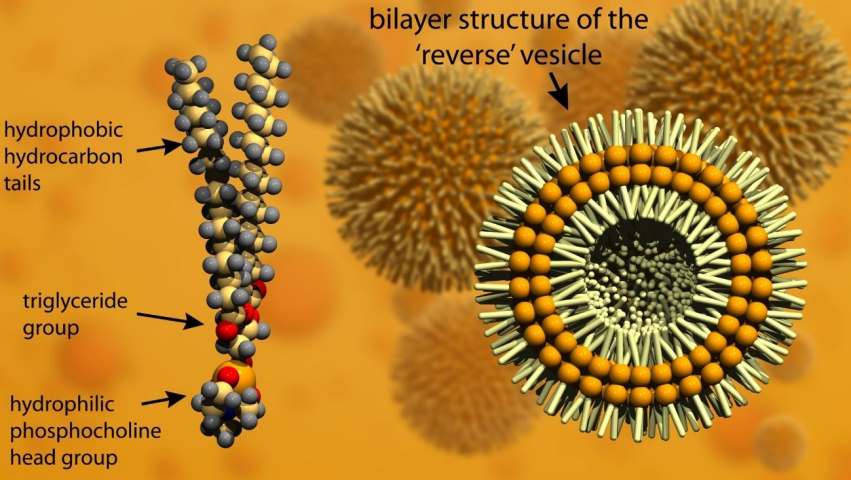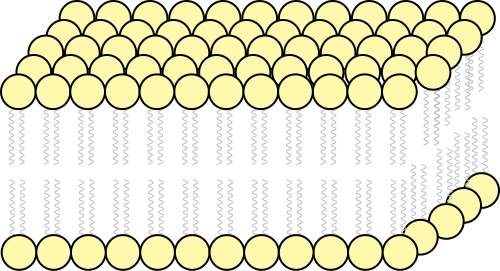
Glint of sunlight on the lake region around the northern pole of Titan.
Glint of sunlight on the lake region around the northern pole of Titan.
Titan is the only place in the outer solar system which we have sent a lander to, the Huygens probe.
Sometime maybe we will send some more probes there to explore it further. This was a recent idea for a submarine to explore Titan:
And this is an idea for an aerostat to explore it's atmosphere, VAMP

The Northrup group's VAMP aerostat could also be used for Titan.
See also Life on Titan (wikipedia).
This is such an extreme habitat, at temperatures of -180 °C, that it seems impossible that Earth originated life could grow there naturally, except in cryovolcanoes or ice temporarily melted by impacts. The limit for microbes to complete their life cycle is usually given as around - 20 °C (the usual temperature for freezers), around -10 °C for lichens, and around -2 °C for higher lifeforms such as insects, though there can be some metabolic activity down to -26 °C for microbes and down to -50 °C or lower for some cold hardy multicellular life.
Details, lowest temperatures for Earth life: The lowest temperatures that microbes can grow, i.e. complete their lifecycle and reproduce, is usually said to be around - 20 °C in salty brines, for instance, there have been no examples of spoilage of food in freezers kept below that temperature. When cold loving (psychrophile) microbes are cooled, they produce a kind of antifreeze that prevents formation of the ice crystals which normally damage cells as the ice expands. Instead their cells gradually turn into a kind of glass as they cool down (vitrify). As they do this, they can can still do some metabolic activity until they are completely vitrified and it stops completely at - 26 °C which seems to be the limit for any activity at all.
Some invertebrates may continue to have some metabolic activity down to much lower temperatures, below - 50 °C. Insects may not just have metabolic activity but even remain active at low temperatures, for instance a Himalayan insect which is still active down to −16°C. But even these cold tolerant multicellular lifeforms typically need temperatures of around -2 °C to complete their life cycle.Many microbes and multicellular life also, if the cooling is slow, will revive after vitrification when restored to normal temperatures. More details here: A Low Temperature Limit for Life on Earth, and The thermal limits to life on Earth, for details of how low temperature life is possible, see Psychrophilic microorganisms: challenges for life , also see more cites in wikipedia article Psychrophile
Also there is no liquid water, instead, ethane and methane, which makes it exceptionally interesting for exobiology, if there is life there. There is no way it can be similar to Earth life.
Even the cell walls can't be the same. There are some microbes on Earth that can live in hydrocarbons, by having an extra layer to protect themselves from the oil, including a report of one strain of Pseudomonas able to tolerate up to 90% of a hydrocarbon alpha-pinene. They don't metabolize the hydrocarbons but usually have an outer membrane modified to let them tolerate them. See page 38 of this PhD thesis by Lucy Norman. However Titan life would have to live in 100% hydrocarbons. The cell membrane structure of Earth life would not work in those conditions as it depends on hydrophylic molecules that are attracted to water to retain its structure. There is water inside and outside the membrane, and then the membrane itself consists of long chain molecules with one end hydrophobic and the other hydrophylic. Then they join together back to back to form a membrane with the hydrophylic heads pointing both outwards and inwards and the hydrophobic tails touching each other in the middle of the membrane.
This shows how it works:

Figure 7 of Lucy Norman's PhD thesis on spontaneous self assembly of reverse vesicles suitable for Titan in hydrocarbon fluids. She credits it as: "Illustration of the reverse vesicle structure taken from Norman & Fortes"
Normally it's the other way around on Earth with the hydrophobic tails inwards and heads outwards

Yellow polar heads separate the grey hydrophobic tails from the surrounding water and the interior fluid of the cell itself. Diagram by Jerome Walker.
Lucy Norman looks at many ways that reverse vesicles can spontaneously self assemble, from her experimental results. It's very technical. But she has a summary in her chapter 9 which looks at the applications for astrobiology.
I will paraphrase what she says there in the first few paragraphs of her chapter 9 (as it uses rather technical language):
It's unlikely that these reverse vesicles would be used only for cell walls. The hydrocarbon lakes of Titan are likely to contain more than one alkane liquid, with methane-ethane-propane in equilibrium with the atmosphere. The vesicles could be used to create a cell with a "cytoplasm" that differs from its medium, and also, pockets of unique solutions for specific purposes within the cell.
These pockets then could be used to create the equivalent of the organelles of Earth microbes, which could also trap different alkanes to help with whatever process that organelle is devoted to facilitating. Multiple vesicles joined together then have the potential to carry out long chemical processes with different chemical environments for each step.
Some of them could also trap ammonia water in bilayers which could decrease its freezing temperature to the point where perhaps it could be used for nano-reaction centeres for bological processes that depend on polar solvents. Then there could be nano-channels of liquid ammonia water to transport these throughout the cell. The microbes on Titan could get the water from short lived liquid water from cryovolcanoes (cryolava) or maybe from the icy bed of the hydrocarbon lakes using antifreeze proteins.
They could be used as reservoirs for polar solutes (like the ammonia rich water) and to transport proteins and enzymes.
(paraphrase of the first few paras of Chapter 9, page 331 of Lucy Norman's 2015 thesis)
Here is Chris McKay talking about prospects of life in the Titan lakes
He mentions there that Huyguens made provisional observations of hydrogen and acetylene and ethane depletion near the surface of Titan, which they'd predicted as a possible sign of life on Titan. Also he mentions that oxygen would be in short supply, and need to be extracted from water ice "rock" by microbes. This is related, a possible way that life on Titan could make cell membranes without use of oxygen.

Such oxygen free cell walls are exotic biochemistry but still carbon based.
Titan's ethane / methane ocean is also ideal for William Bains' silicon based biochemistry (with silicon's weak bonds permitting much faster chemical reactions in such cold conditions). See page 160 of this paper and earlier pages.
You can read about Chris McKay's ideas about Titan in detail in his 2016 paper Titan as the abode of life.
Amongst other evidence, the photochemical models predict a layer of ethane enough to cover the surface to a depth of many meters, but Cassini didn't find it. The Huygens lander didn't find any acetylene in the gases released from the surface. And models suggest that hydrogen is being transported towards the surface suggesting something there is removing hydrogen from the atmosphere.
Also, there is more hydrogen above 50˝N than the global average. Could this be because the southern hemisphere, with more ethane, is more hospitable to life than the northern hemisphere dominated by methane?
He suggests four possible conclusions (see page 11)